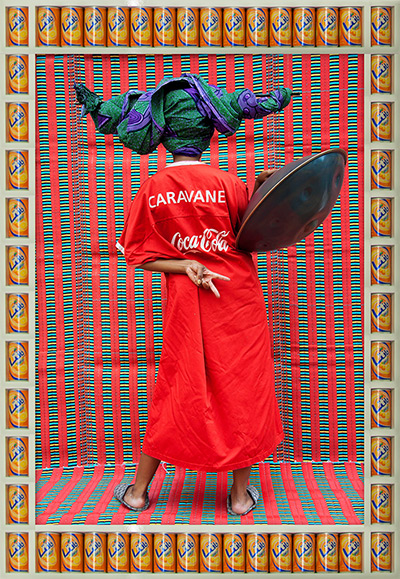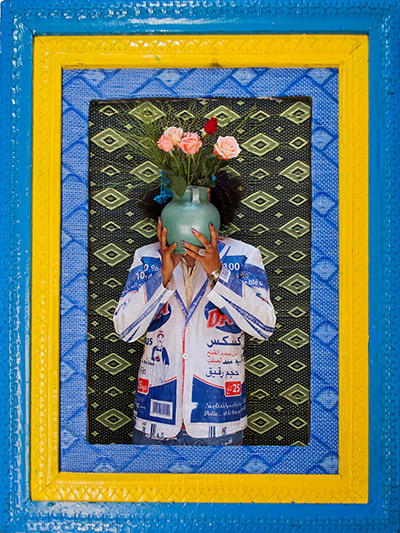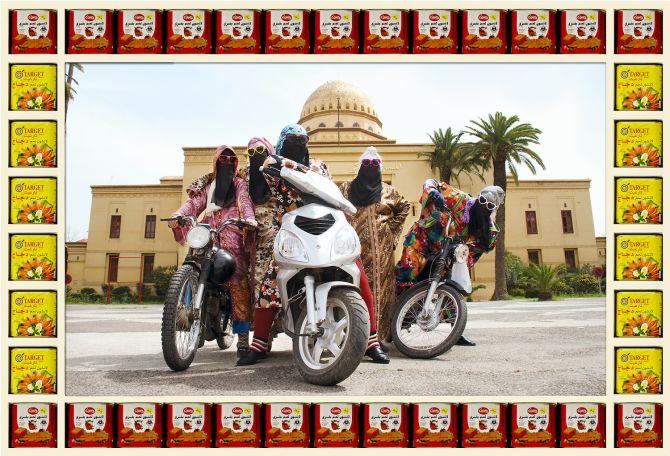
Hassan Hajjaj: My Rock Stars Experimental, Volume 1, 2012, video-installation.
To be seen in:
LACMA
5905 Wilshire Blvd.
Los Angeles CA 90036
tel 323 857-6000
publicinfo@lacma.org
This three-channel video installation by Hassan Hajjaj includes nine separately filmed performances by an international array of musicians. The sitters/performers wear clothes that Hajjaj has designed himself, and pose in spaces covered by patterns he has selected. Clad in traditional fabrics, as well as luxury brand clothes and shoes, the musicians bridge the gap between now and then, us and them, high and low culture, reflecting a fusion of Moroccan craftsmanship and contemporary art.
Hajjaj, born in 1961 in Larache, Morocco, moved to London in 1975, and now divides his time between London and Marrakesh. Best known as a photographer, he also employs video. His work depicts a globalized society that pushes and blurs the boundaries of cultural identity—whether African, Arab, or Western.
More about Hajjaj: his photowork
Hajjaj, who is fifty-three, was born in Morocco and moved to London in his teens, where he worked as a d.j., a promoter, a stylist, and a designer. Before taking up photography, in his late twenties, Hajjaj returned to Morocco to work as an assistant on a photography shoot for a fashion magazine. He says that he was frustrated to see his native country used only as a backdrop for Western women and clothing, and that the experience pushed him to make Morocco a prominent subject in his own work.
Hajjaj’s portraits draw on the work of African luminaries such as Malik Sidibe and Seydou Keita, but they also retain a modern feel, juxtaposing traditional Muslim clothing —hijabs, niqabs, babouches, and abayas—with Moroccan biker culture and famous Western brands, like Nike and Louis Vuitton. Hajjaj uses his friends as models, and he designs their outfits with traditional prints and counterfeit brand-name fabrics from markets in London and Marrakesh. He also builds the frames for these pictures from found objects: Legos with Arabic lettering, cans of Fanta, boxes of chicken stock. Hajjaj’s first solo show in New York opens tonight, at the Taymour Grahne gallery, in Tribeca, and is on view through March 8th.
Courtesy Taymour Grahne gallery, New York, and Rose Issa Projects, London.




